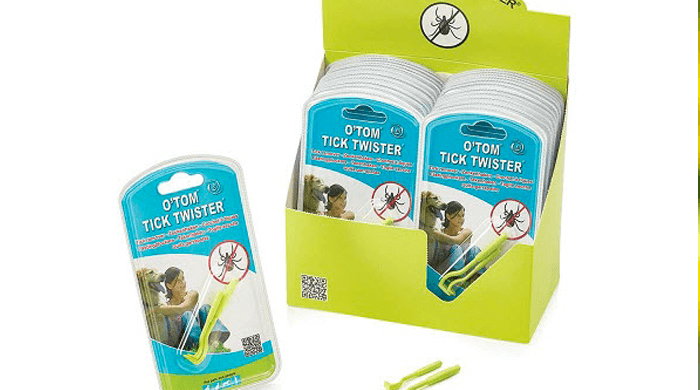Ticks on dogs can be Spring’s most unwelcome guests.
For many dogs and owners, Spring signals the start of early evening walks and a return to the fields and woods. Unfortunately, we’re not the only ones
enjoying the warmer (but still slightly damp) weather. Spring is prime time for pests such as Ticks.
These pesky critters can latch on and make life really uncomfortable for your pal as well as transmitting potentially serious diseases.
Safe Tick Removal
Safe tick removal is difficult without the right equipment and you could leave parts of the Tick embedded in your dog, leading to more risk of serious
infection. Ticks latch on by inserting their mouthparts in to your dog and pulling alone won’t remove them – in fact, they are likely to break off
and remain, meaning that although the tick body has been removed, the mouthparts are still attached to your dog and will continue to cause irritation
and possibly, infection.
Enter the Otom Tick Twister ∼ Using a twisting action, the whole Tick is removed freeing your dog from the pain and irritation. Lightweight, easy to use
and each pack contains two sizes, so no tick is safe.
Watch the video below to learn how to use your O’Tom Tick Twister.
It is essential not to compress the body of the tick during removal, reducing the risk of saliva back-flow, that can lead to infections and/or allergies.
Tweezers and other instruments exert a pressure on the tick. The shape of the Tick twister, designed by a veterinarian, takes into account the tick’s morphology.
Tick’s mouth-parts are covered with backward directed projections; this allows the tick to “anchor” in the skin.
By pulling up on the tick, the spikes will rise and lock the mouth-parts into the skin. The tick may break and leave parts in the skin causing infection.
By twisting motion, the spikes fold into the axis of rotation, and the tick is easily removed, without traction, decreasing the risks of breaking the rostrum.
The Tick Twister removes ticks by rotation and not by pulling; among all instruments supposed to use rotation, it is the easiest to use because of
its shape and its size.

